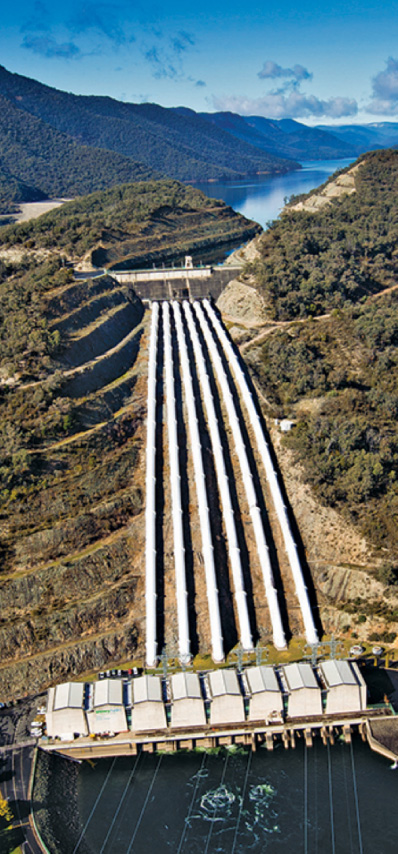Hydro energy
-
-
- Why we are upgrading our electricity system
- How NSW will benefit from the energy transition
-
- All about renewable energy
- A long-term vision for locals
- The best office in the world
- The future of farming is here
- Renewables generates 100 new jobs for Western Sydney manufacturer
- The people behind NSW’s energy transition
- NSW ’s giant super battery is underway
- Unlocking opportunities for the people of Dubbo
- Meet Bridget from the Central-West Orana REZ
-
-
- Agreement between the state of NSW and Origin on its plans for Eraring power station
- NSW coal market price emergency
- Delivering a Gas Decarbonisation Roadmap
- Enabling distribution-connected batteries
- Far West NSW power outage post event review report
- NSW Consumer Energy Resources Installer Portal
- NSW Embedded Network Action Plan
- NSW Transmission Planning Review 2025
- Network-to-network connection process
- System strength
- Corrosion protection systems
- Demand response
- Electricity Market Operation Rules
-
- About the Energy Security Safeguard
- Review and reform
- Exemptions
-
-
-
- Air conditioner - eligibility
- Core eligibility
- Electric water heater replacement with a solar electric boosted water heater - eligibility
- Electric water heater replacement with an air source heat pump - eligibility
- Electric water heater replacement with an air source heat pump - eligibility
- Gas water heater replacement with a solar electric boosted water heater - eligibility
- Gas water heater replacement with an air source heat pump - eligibility
- Gas water heater replacement with an air source heat pump - eligibility
- HVAC - eligibility
- Heat pump water heater - eligibility
- Hot water heater - eligibility
- Install a new air source heat pump - eligibility
- Pool pump - eligibility
- Refrigerated cabinet - eligibility
- Solar battery - eligibility
- Solar battery - eligibility
- Solar battery eligibility landing
- Spare refrigerator or freezer - eligibility
- Ventilation or refrigeration motor - eligibility
-
- Air conditioner - certificates
- Electric water heater replacement with a solar electric boosted water heater - certificates
- Electric water heater replacement with an air source heat pump - certificates
- Electric water heater replacement with an air source heat pump - certificates
- Gas water heater replacement with a solar electric boosted water heater - certificates
- Gas water heater replacement with an air source heat pump - certificates
- Gas water heater replacement with an air source heat pump - certificates
- HVAC - certificates
- Heat pump water heater - certificates
- Hot water heater - certificates
- Install a new air source heat pump - certificates
- Pool pump - certificates
- Refrigerated cabinet - certificates
- Solar battery - certificates
- Solar battery certificates landing
- Spare refrigerator or freezer - certificates
- Ventilation or refrigeration motor - certificates
- Solar battery - certificates
-
-
- Administration and compliance
- Energy certificate schemes
- Gas network safety and operating plans
- Pipeline management plans
-
- Scaling up a thriving renewable fuel industry in NSW
- NSW retail electricity tariff reforms
- Going circular in clean energy
- Pipelines and Gas Supply Acts proposed updates - 2024
- Pipelines and Gas Supply Regulations
- Solar emergency backstop
- ASP Scheme review
- Corrosion Protection Systems Regulation 2020
- Digital metering: improving service delivery in NSW
- Electricity Infrastructure Roadmap consultations
- Queensland-Hunter Gas Pipeline ATS
- Public lighting code
- Service and installation rules
Hydro energy and its uses
Hydro energy is the most established renewable energy technology in NSW and can provide rapid power on demand.
Hydro energy uses the force of moving water to create electricity.
It’s been harnessed for several centuries to drive water wheels and mills for agricultural and industrial purposes. In the late 19th century, it began to be used for electricity generation. There are three main hydro-electric energy technologies:
- Storage systems: water is stored in a dam or reservoir and released to drive turbines and generate electricity.
- Pumped storage systems: water is pumped to a higher storage reservoir and later released to provide dispatchable, on-demand energy storage for large-scale systems over days, weeks or even seasons.
- Run-of-river systems: the natural flow of rivers is used to produce electricity, usually for smaller facilities, with less impact on the environment than a dammed system.
Hydro resources in NSW
NSW has generated hydro energy for more than 75 years. In addition to existing large- and small-scale power stations, we have extensive river systems – some already with small dams or weirs – that offer potential sources for more small-scale hydro-electric facilities. Our eastern mountain ranges have abundant rainfall and their steep slopes make it easy for the water to run down. Water or sewage treatment plants and water supply pipelines could also be harnessed for small-scale hydro systems.

How NSW uses hydro energy
Snowy Mountains Scheme
Built between 1949 and 1974, the Snowy Mountains Hydro Electric Scheme is Australia’s largest hydro-electric scheme.
The role of small-scale hydro
A small-scale hydro scheme is one that generates electrical power of between 100kW (kilo-watts) and 1MW (mega-watts), feeding this generated power directly into the grid or as part of a large stand-alone scheme powering households.
Small-scale hydro-electric generation accounted for 1% of total electricity generated in NSW (including ACT) in 2017. Small-scale hydro-electric facilities have been installed in wastewater treatment plants and water transfer pipelines across the state.
The future of hydro energy in NSW
The government is working to support the next generation of pumped hydro projects by inviting energy and storage proposals that make use of the state’s water infrastructure to support a more secure, affordable and reliable energy mix.